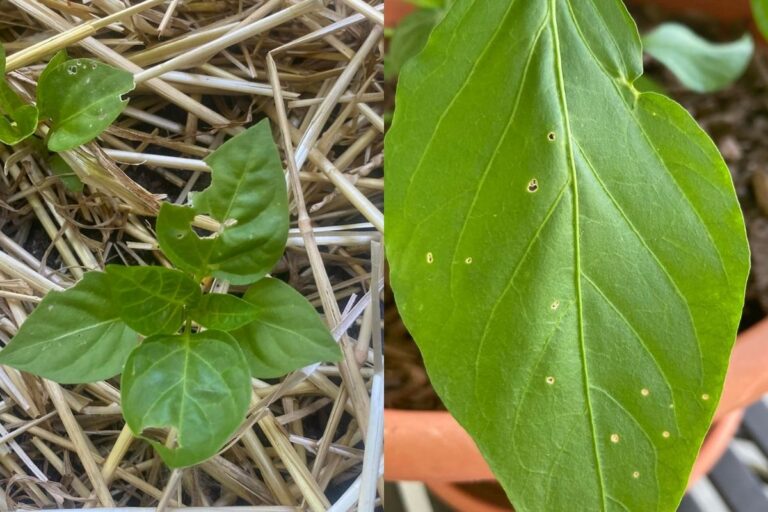Winter Garlic Is Sprouting Too Early (How to Keep It From Dying)
Winter garlic may begin to grow earlier in the fall because of the unstable weather. And it has had enough time to fully root and germinate by this point.
This is dangerous because, despite the crop’s winter hardiness, the upper portion of the crop will inevitably die.
The harvest of winter garlic occurs in mid-summer and requires little to no attention. Overwintering and rooting garlic require careful selection of plants, preparation of the soil in which they are to be planted, as well as accurate timing.
Why Does Winter Garlic Sprout Early?
Expert gardeners have identified three main causes of premature sprouting of winter garlic, which can stimulate the growth of green mass in combination:
- Too warm in fall with an unusual temperature regime for this time of year.
- When the cloves were planted too early in the season.
- Over-fertilization of the bed with nitrogen fertilizer.
Garlic Can Freeze In The Winter When Sprouted
[1] It’s frosty outside, but there isn’t a flake of snow to be seen.
[2] In addition, the temperature of the air fluctuates constantly. In this case, the temperature can fluctuate by 10 degrees or more per day.
[3] There are no leaves or weeds left behind in the beds.
[4] After a long thaw period, frosts will begin again.
As a precautionary measure, you should ensure that the seedlings of winter garlic are protected from freezing temperatures by covering them with a layer of mulch.
How Do You Save Winter Garlic If It Started Sprouting Too Soon?
[1] Apply a 5-6 cm thick layer of peat as a mulch on top of the soil. This option is ideal if a severe cold spell is a forecast, as the air temperature can drop to 12 degrees Fahrenheit. Peat will retain moisture, keep the ground from freezing, and keep sprouting shoots alive.
[2] Cover winter garlic with straws. The soil won’t dry out if there are short and mild frosts, and straw will keep it warm. It isn’t a good choice for areas with a lot of rain, as straw will trap moisture and cause plants in the garden to start decaying.
[3] Cover the garlic bed with a thick layer of loose material. I recommend using straw, hay, coarse shavings or sawdust, non-sour crumbly peat, Styrofoam crumbs, fallen leaves, and even dried horse manure. These materials are excellent at allowing air to pass through, but they also keep the temperature stable. So, garlic sprouts won’t go bad.
[4] Use landscape fabric to cover the bed and attach it to the edges with stones or wooden planks so that the wind does not blow it away. This technique works best in areas with a lot of wind but not too much frost. If the cold weather is severe, it is worthwhile to add a layer of compost or peat moss beneath the landscape fabric.
[5] As a last resort, if covering sprouted garlic isn’t an option or material isn’t available and frost is imminent. You can use soil to cover the sprouted garlic. Not a good choice because the soil quickly compacts making it impossible for air to get in. Adding coarse sand to the soil will loosen it even further.
Cover all of the sprouts with soil mixed with sand and wait for winter to pass. When spring arrives, use a rake to carefully remove the soil covering.
Atypical weather for the time of year is frequently the cause of sprouts, which reduces yield.
Garlic’s Best Way To Survive The Winter
[1} Winter garlic should be covered with dry grass or hay to ensure a successful overwintering period.
There is a high risk of freezing the cloves if you don’t cover the bed with loose material in northern and middle latitudes.
[2] The soil does not freeze below 17 °F (-8 °C) under a layer of such “insulation” in 15-20 cm. However, prolonged warm weather under the cover provides ideal conditions for garlic germination.
As a result, the plant may appear prematurely on the surface. After the first frost has set in, you must insulate the bed to prevent the garlic cloves from emerging early.
Keeping the cloves fresh is as simple as keeping them in a thermos at a constant low temperature, thanks to the layer of earth that covers the top layer.
To keep the garlic sprouts from dying in winter, the following steps must be taken:
- Instead of making furrows for planting, make holes the depth of three cloves.
- There should be at least ten centimeters of space between each hole.
- A layer of about two centimeters of mulch is applied to the top of the plantings, which are then covered with previously prepared dry soil.
Making holes in frozen soil is difficult, but it has a practical application in farming.



